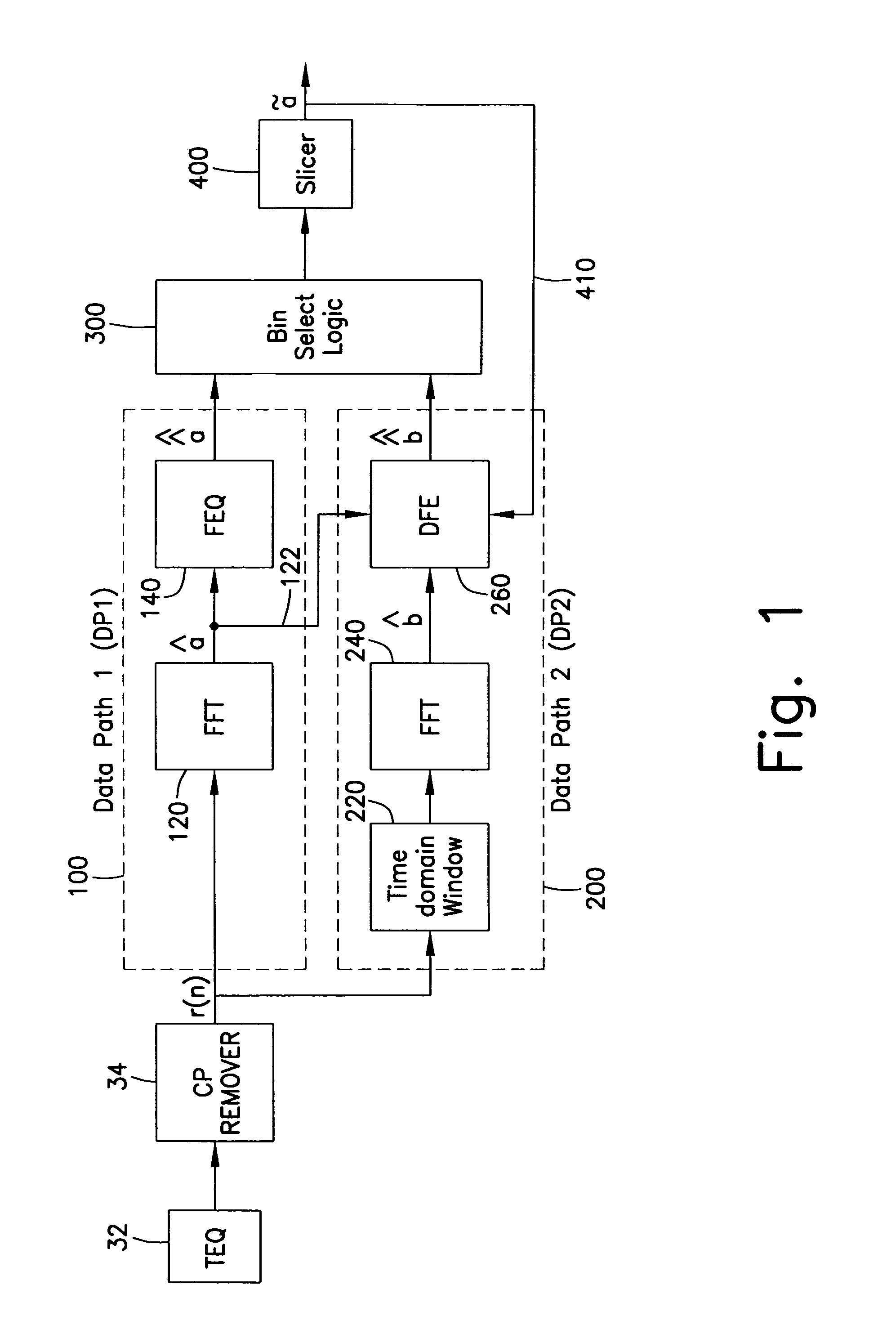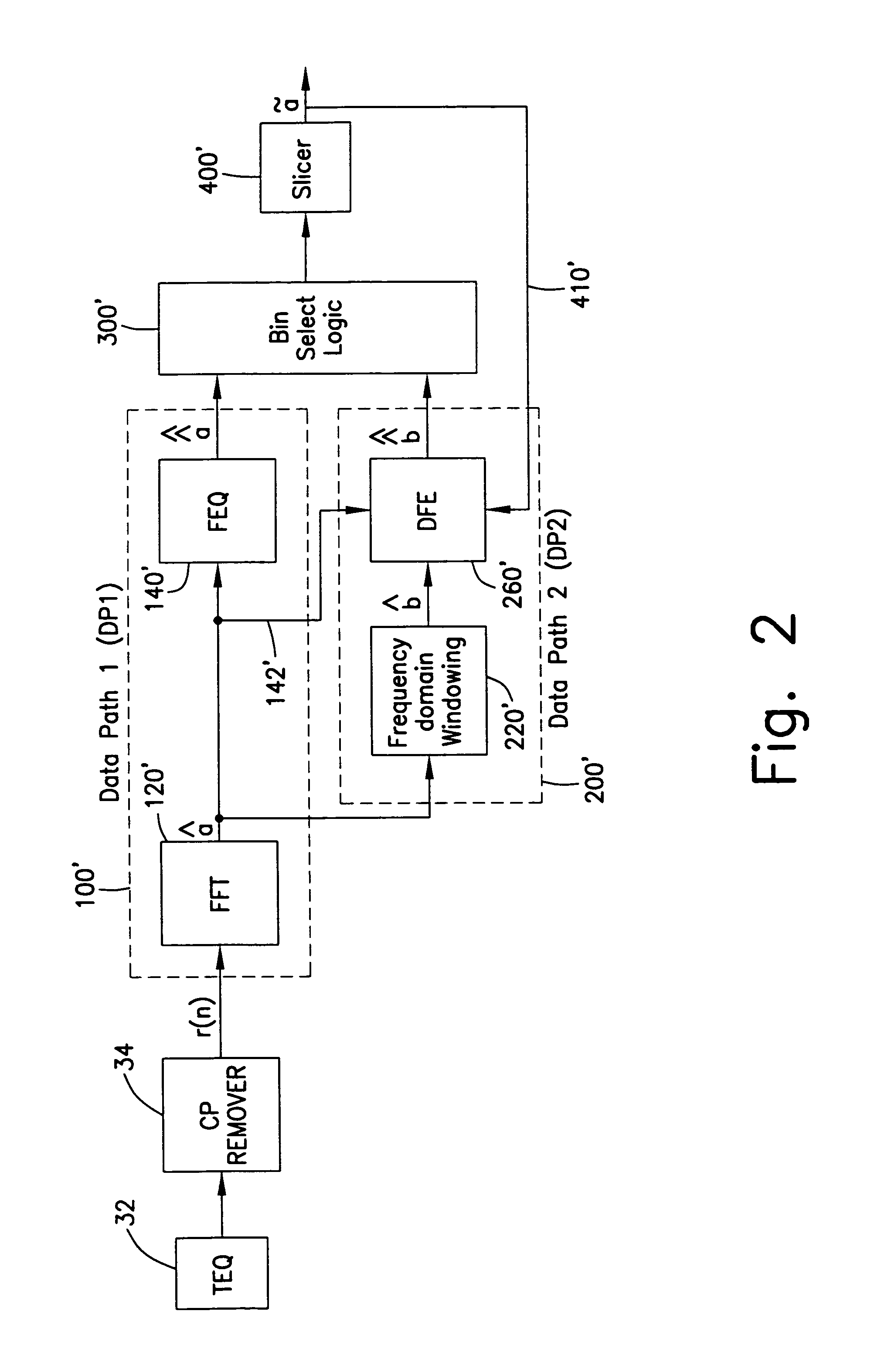Receiver for discrete multitone modulated signals having window function
a multi-tone modulation and receiver technology, applied in pulse manipulation, instruments, pulse techniques, etc., can solve the problems of limited performance gains and may also be achieved, and achieve the effect of reducing the threat of error propagation and being simple to implemen
- Summary
- Abstract
- Description
- Claims
- Application Information
AI Technical Summary
Benefits of technology
Problems solved by technology
Method used
Image
Examples
Embodiment Construction
[0089]First, a DMT signal model will be discussed. Consider a discrete time DMT system model in which N orthogonal sinusoids (tones / bins) are transmitted each symbol time using 2N samples per symbol. The nth time domain sample of the normalized transmitted signal for the ith bin is given by
[0090]si(n)=22N[Iicos(win)-Qisin(win)]n∈[0,2N-1],i∈[0,N-1](1.1)
where Ii and Qi are the real and imaginary parts of the ith complex frequency domain sub-symbol ai=Ii+jQi chosen from a QAM constellation; j=✓−1; wi=2πi / 2N is the angular frequency in radians / sample of the ith bin. Denoting the minimum and maximum active bin number by bmin and bmax respectively, the nth sample of the composite transmitted signal is given by
[0091]x(n)=∑i=bminbmaxsi(n)(1.2)
Let the sample rate be fs samples / sec. Each symbol is prefixed with a cyclic prefix (CP) of duration TCP=G / fs seconds by setting
x(−n)=x(2N−n), nε[1, G] (1.3)
For example, as per the T1.413 ANSI standard for full-rate ADSL and for ADSL-L...
PUM
 Login to View More
Login to View More Abstract
Description
Claims
Application Information
 Login to View More
Login to View More - R&D
- Intellectual Property
- Life Sciences
- Materials
- Tech Scout
- Unparalleled Data Quality
- Higher Quality Content
- 60% Fewer Hallucinations
Browse by: Latest US Patents, China's latest patents, Technical Efficacy Thesaurus, Application Domain, Technology Topic, Popular Technical Reports.
© 2025 PatSnap. All rights reserved.Legal|Privacy policy|Modern Slavery Act Transparency Statement|Sitemap|About US| Contact US: help@patsnap.com



